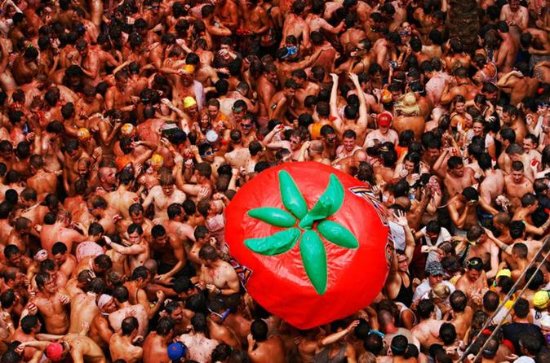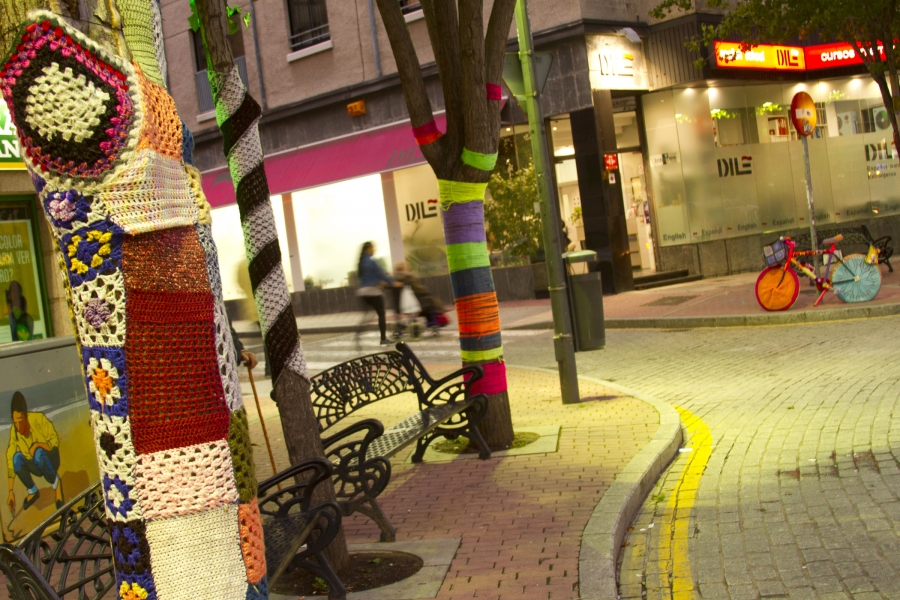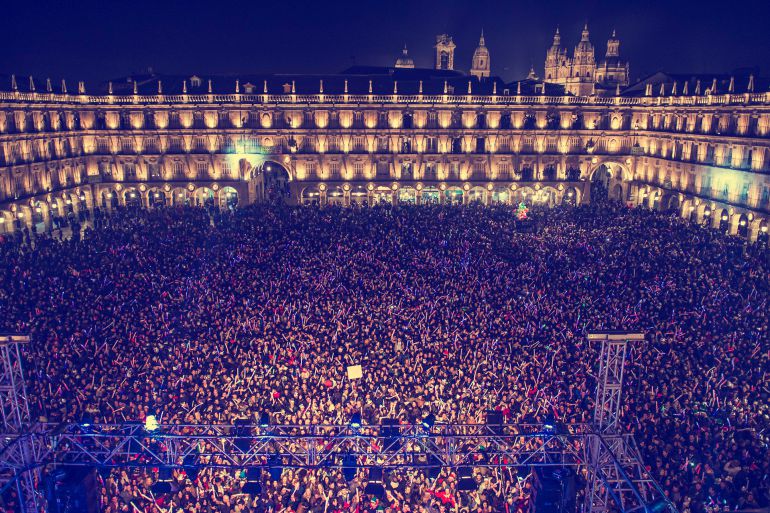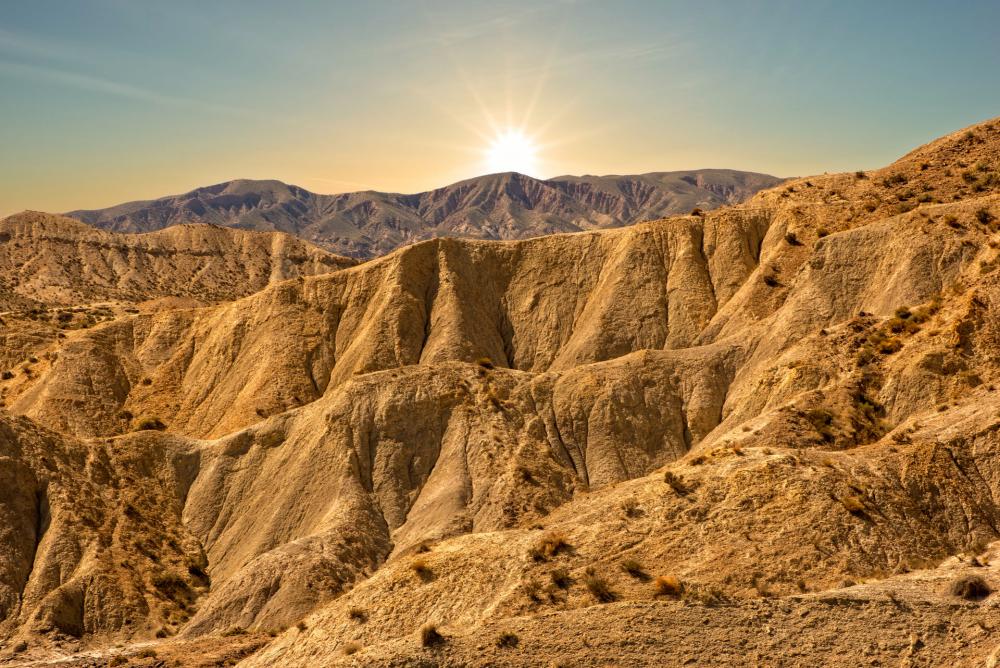Spain is a country that is positively steeped in tradition, culture and so much natural beauty that it invites millions of visitors each and every year. For the sightseeing fans out there, there is an abundance of spots right across the country that will surely demand your attention.
We spoke to several individuals, all with their own experiences and love for the country, for their inputs on where the must-see spots of Spain are located.
Navigate the article
#1 La Tomatina in Bunol, Valencia
One of the weirdest and unique things to do in Spain is to participate in La Tomatina in Buñol (Valencia), an old tradition in which thousands of people gather in this little Mediterranean town to participate in a tomato fight solely for entertainment purposes. The rule is simple: to throw tomatoes at each other and enjoy as much as they can.
Contributor: Kristina Kinson from generationtours.com
#2 San Juan de Gaztelugatxe
Gaztelugatxe is a small island on the coast of the Basque Country. The islet features a tiny church that has been there since the 9th century. That’s to say, the first hermitage on this island was built in the 9th century, and several others have followed and been destroyed.
The church can only be accessed on foot by climbing the zigzagging stairs (241 steps in total!) and it hasn’t been discovered as one of the gems of Spain yet, although it was used as a filming location for the seventh season of HBO’s Game of Thrones.
San Juan de Gaztelugatxe makes the perfect day trip from Bilbao, Donostia / San Sebastián or Vitoria-Gasteiz.
Contributor: Sander from arscurrendi.com
#3 Barrio Del Oeste, Salamanca
Barrio del Oeste is one of Salamanca’s hippest neighbourhoods. Streets are covered in ambitious graffiti projects, trees get woollen scarves and there are coffee shops sprawled around.
It’s ridiculously fun to just wander around this neighbourhood without a real plan as to where you’re going. You’ll discover sensational street art on every corner and you can take some pictures that will make your friends more than jealous.
Contributor: Sander from arscurrendi.com
#4 Nochevieja Universitaria, Salamanca
This one is specifically aimed at university / college students in Spain. Every year, Salamanca’s Plaza Mayor (central city square) is transformed into the scenery of a huge new year’s party for students. But here’s the twist: it’s not actually organised on New Year’s Eve.
The second to last Thursday of December, students from all over Spain come down to Salamanca to celebrate the new year before it even starts, including the famous midnight countdown.
Contributor: Sander from arscurrendi.com
#5 La Alberca Pig Hunting
La Alberca is a small mountain village in Castilla y León, Spain’s biggest autonomous community. Even without the whole pig thing, it’s a quaint city to walk through and soak up the atmosphere.
On July 13, a pig named San Anton is blessed and released in the streets. Throughout the following month, the pig roams around the city and is fed by the citizens. On January 17, the pig is raffled off between the people of La Alberca, and tradition has it that the winner hosts a big dinner party for everyone.
So, if you’re in La Alberca between July and January, be sure to spend some time trying to find a stray pig. Should you find it, you’ll have a hell of a story to tell your family at the next gathering.
Contributor: Sander from arscurrendi.com
#6 The Cave of Altamira
The Cave of Altamira is a cave located in the autonomous community of Cantabria. It’s famous because it features various cave paintings and charcoal drawings which were drawn over 30,000 years ago.
Unfortunately, the original cave is closed for visitors, but a replica, La Neocueva en el Museo de Altamira, can be visited in the National Museum and Research Center of Altamira (which is located right next to the cave).
Contributor: Sander from arscurrendi.com
#7 La Rioja
La Rioja would arguably be one of the least well-known autonomous communities of Spain, had it not been for its long tradition of making excellent red wine. Besides, it’s also home to amazing gastronomy, which matches perfectly with its wines.
Because of the community’s knowledge about wine, several wine-tasting experiences, wine tours and wineries have been set up in the area. It’s up to you to find out which ones tickle your fancy.
Contributor: Sander from arscurrendi.com
#8 Castelling in Catalonia
In Catalonia, Spain, one of the most unusual 'sports' is called castelling.Human towers are formed--performed!--by people climbing on top of each other's shoulders until the tiniest human reaches the top. Families from different Catalonian towns have teams that practice diligently over the winter. Then in April, the season starts and they compete in town squares while thousands of fans watch, with the final competition on November 1st, All Saints Day.
Each tower consists of hundreds of people, with the baselayer being as many as five hundred people alone. There's costumes, music, TV cameras, and as always, good food.
Contributor: Josie from HouseSittingTravel.com/Catalonia
#9 Tabernas
Visit the only desert in Europe. Tabernas, located in Spain's Andalucia region, is the only desert on the continent. While here stop by the town of Tabernas, where many movies set in the wild West are themed -for a taste of Texas right in the middle of Spain.
Contributor: Viktoria Altman from gotraveltipster.com/best-places-visit-andalusia-spain
#10 Puente Nuevo
Check out the Puente Nuevo, the New Bridge of Ronda. The original Ronda bridge build in the early 1700s collapsed and due to shoddy design, killing dozens. The new bridge, many believe, was the real world inspiration for several scenes in Hemingway's masterpiece For Whom the Bell Tolls.
Contributor: Viktoria Altman from gotraveltipster.com/best-places-visit-andalusia-spain
This post was created with our nice and easy submission form. Create your post!











